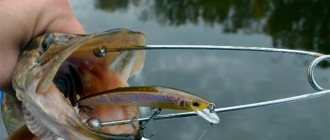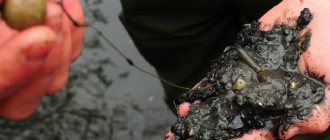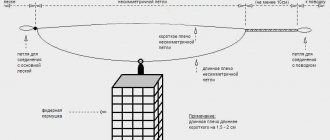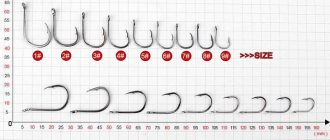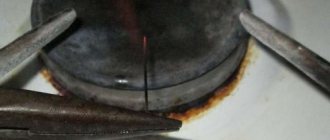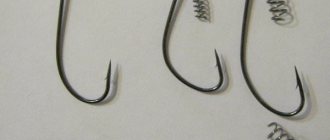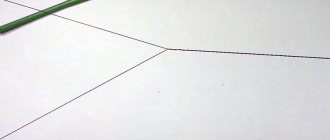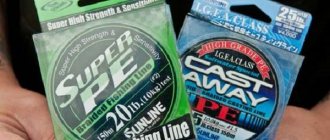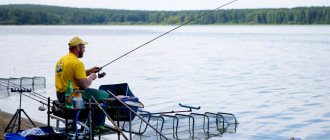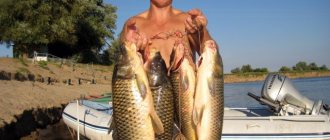Hooks for bream fishing
Bream is the main object of feeder fishing. It can be difficult for a novice feeder to decide which hook to choose for fishing this fish. This choice directly depends on what kind of bait the angler uses. Large bream are usually caught using the following types of baits:
- crawling out;
- a bunch of dung worms;
- several maggots;
- a bunch of bloodworms.
Adult bream, as a rule, look for food in the bottom soil, so the hook must have sufficient mass to quickly sink to the bottom. You should not use light models made of thin wire to catch this fish, since in this case the bait will slowly sink to the bottom and can be eaten by small fish feeding in the water column. In addition, a product made of thin wire will inevitably tear the delicate lips of the bream, which will lead to frequent fish escapes.
Models with additional barbs on the forend are ideal for worm fishing.
When catching bream using a crawler, you should use feeder hooks number 4–2 (according to the international classification) made of thick wire. A hook of this size can easily hook a large worm. It’s good if the design of the hook includes 2-3 small barbs located on the fore-end - this will ensure more reliable retention of the hook and will not allow the fish to pull off the bait with impunity. Such models can be found in the line, which produces hooks for fishing on any type of bait.
If a bunch of worms is used as bait, it is necessary to use a model with a long shank and a straight bend, made of medium-thick wire. Additional beards on the fore-end will also not be superfluous. To attach 3-4 worms, you will need a size 6-4 hook. For worm fishing, it is better to use dark or red feeder hooks.
When the bait is several maggots or a bunch of bloodworms, it is better to use models made of thin wire and minimally damaging the bait. Live bait will move actively and is more likely to attract the attention of fish. Models made of thin wire will inevitably lead to a slow fall of the bait to the bottom and increase the risk of it being eaten by small fish feeding in the upper layers of the water. To prevent this from happening, you need to attach a small lead pellet 10 centimeters from the hook, ensuring that the bait quickly falls. When using small hooks, in order to avoid breaking the bream lip, it is necessary to use a rubber shock absorber in the equipment, which is installed between the leash and the feeder and allows you to soften the jerks of the fish. The size of the hook for fishing for several maggots or a bunch of bloodworms should not exceed No. 10.
Knot for tying a hook with a spatula
- At the end of the fishing line we form a loop and apply it to the fore-end, while we should have a reserve of 6-7 cm of fishing line left;
- With the free end we make 3 turns around the forearm and the inside of the loop;
- Then we make 4 additional turns, capturing the fore-end and the entire loop.
- Then we insert the edge of the fishing line into the bottom of the loop, wet it and slowly tighten the knot.
- Some features of choosing hooks for the feeder.
Goatee
Hooks with a large barb that is strongly bent from the sting are not recommended for feeder fishing. Since the essence of feeder fishing is that the fish must be detected by taking the bait in its mouth, and with a strongly curved barb it is detected, but not completely, which is why frequent runs occur. In fairness, I would like to note that such hooks hold fish well when playing, but for fishing on a feeder, due to the strongly bent barb, they are not very suitable.
Sharpness of the sting
Very sharp hooks are excellent at hooking fish; Japanese manufacturers can boast that their feeder hooks are especially sharp. But sharp hooks also have their downside: the sharper they are, the faster they become dull. If during the fishing process you observe 3-4 empty bites, change the hook to a new one and if the bites begin to materialize, then the problem is in the hook.
Sports hooks that have a very sharp sharpening, allowing you to realize almost every bite, become dull especially quickly. Therefore, they are not entirely suitable for amateur fishing; for these purposes, it is necessary to take branded hooks, but not the most expensive and sharp ones.
For catching roach
How to tie a fishing hook knot
Roach are also consistently caught on feeder gear throughout the entire period of open water. The principle of selecting a hook for feeder fishing for roach is radically different from that used in bream fishing. This is due not only to the fact that roaches are caught using other types of baits, but also to the specific feeding habits of this fish. For fishing for roach use:
- one or two bloodworms;
- one maggot;
- cereals.
Roaches react poorly to bait lying on the ground, preferring to eat food that slowly sinks to the bottom. The main task of the angler when catching roach on a feeder is to maximize the time the bait falls to the bottom. In order to achieve this, you will need to use very light hooks made of thin wire. Roach does not have such an impressive size as bream, so it is extremely rare for it to escape from thin hooks. Experienced feeders advise using models with a spatula to catch this fish, since they are slightly lighter than designs equipped with a ring.
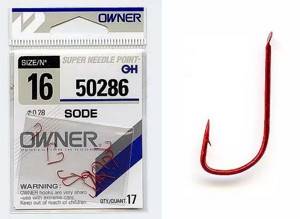
Red hooks are well suited for fishing with bloodworms.
The size of a hook for fishing for bloodworms can range from No. 22 to No. 16 and largely depends on the size and activity of the fish. When fishing with maggots and oat flakes, you can use larger models that correspond to numbers 18–12. If roach is caught using bloodworms, then red hooks will show the best results. When fishing with oat flakes and maggots, preference should be given to light-colored models, the color of which is as close as possible to the color of the bait.
Feeder hook with spatula or ring
Many fishermen, having noticed a spade on the fore-end, bypass it, not knowing how to tie such a hook to the fishing line .
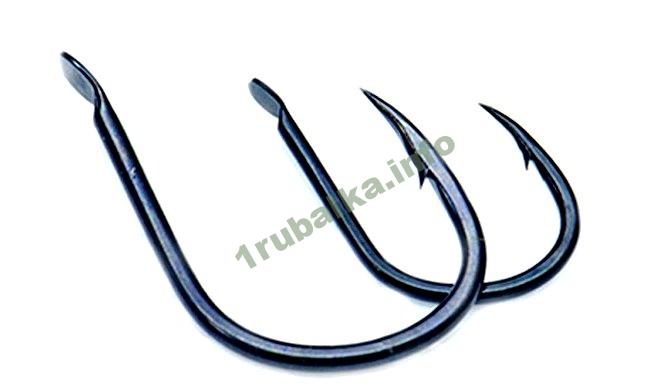
At the same time, a hook with a spatula is more reliable than with an eye, especially in small sizes, because it is very difficult to make an eye of small diameter so that it is also strong. Often, such feeder hooks either have a hot eye that breaks easily, or a sharp edge that cuts the fishing line.
To be fair, it should be said that hooks with a spatula from unknown manufacturers may also have a spatula with sharp edges. But if you use hooks from trusted brands, then there is no need to worry. Also, due to the simpler technological process, these feeder hooks are cheaper, and the price of the packages may be the same, only there will be more hooks with a spatula.
For fishing crucian carp and tench
When feeder fishing for crucian carp and tench, you should focus on what types of bait are supposed to be used. The following baits are most often used to catch these types of fish:
- muckworm;
- talker;
- semolina and oatmeal dough;
- bread crumb.
If the bait is a small dung worm, then the feeder equipment should include a hook No. 12–8, with an elongated shank and a round ring for attaching the fishing line. In this case, the round ring is a necessary element to prevent the worm from sliding onto the leash. Fishing for chatterbox involves the use of models No. 12–10, made of thick wire. You should not use thin hooks for this type of bait, since the chatter will not hold well on them.

Models with a spring should be used in combination with soft plant attachments.
Various doughs and bread crumbs should be placed on models equipped with a coil spring attached to the forend. The soft bait firmly bites into the wire ribs of the spring and does not fly off even during power casts.
Hooks for feeder color choice
Hooks are available in various colors (blue, red, gold). It has been experimentally noticed that they do not have any special effect on the catchability of feeder equipment and are largely a marketing ploy of fishing companies.
This is especially not true when we use small feeder hooks, where the strung bait completely covers it, and the fish does not see what color it is.
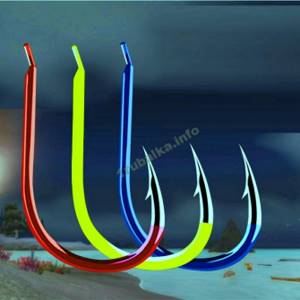
The only time this can be at least somehow justified is when catching large fish with hooks No. 10 - 8, and then only on the condition that we do not completely cover it with bait.
At the same time, there is an opinion among many fishermen that it is good to put a yellow maggot on a yellow hook, and a worm and bloodworms on a red hook. So share your experience with us in the comments.
Carp models
When fishing for carp with feeder gear, hair rigs are often used, which require a specialized hook. Carp models have several distinctive features:
- sting slightly curved inward;
- short, rounded fore-end;
- round fastening ring;
- impressive size.
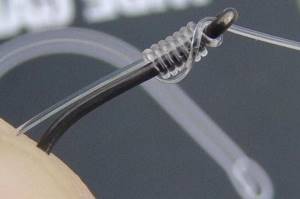
When fishing for carp, special attention should be paid to the quality of the knot with which the hook is tied.
Carp feeder hooks are made from thick wire, have a large margin of strength and are used in combination with baits such as boilies, pellets and corn. The rounded shape of the fore-end and the inwardly curved sting ensure unhindered penetration of the hook into the fish’s mouth when swallowing the bait. The sizes of carp models range from No. 8 to No. 1.
Review of hooks for feeder fishing
When choosing hooks for a feeder, you cannot be guided solely by advice, even if such recommendations are given by professionals.
Even the best feeder hooks in practice may be too large or small, may not be suitable for certain baits, and may not even support the weight of the caught fish and unbend, despite the manufacturers' recommendations.
Most experienced fishermen who practice fishing with classic feeder bottom gear have this old position. The leash should be as thick, short and strong as possible, and located as close to the feeder as possible. The fish finds the bait, in the process swallows the hook with the nozzle and is hooked.
In fact, it all works, but in modern feeder fishing in the progressive donk there are already new ideologies. They say that the leash should be such that it naturally presents the bait to the fish as much as possible.
So natural and digestible that the fish should not even feel a hint that they are trying to catch it. In other words, the main point is the naturalness of the food offered.
Therefore, when we talk about selecting the right hook for a particular bait, it means that the hook should be hidden inside the body of the bait in such a way that the fish does not feel it by weight and appearance.
If we talk about leader materials, and in particular in most cases fluorocarbon, monofilament lines or special materials, then they are also selected in accordance with the size of the fish, their size, and weight. Again, on feeder gear, the materials for the leashes should naturally feed the bait, the fish should not notice it. Therefore, when fishing for crucian carp, this balance is maintained:
- naturalness of presentation;
- the fisherman focuses on the size range of fish.
If we are catching truly trophy specimens, we cannot catch them on thin leashes with tiny hooks.
Fishing on a feeder for various types of fish. When it comes to feeder fishing for mixed fish, it is preferable to use hooks from size 20 to size 10 according to the European classification, with a long shank. For fishing for carp, carp, carp or trophy huge bream, it is better to use medium-sized carp short-shaped hooks with a rounded back.
To catch fish weighing up to 150 grams, which may include roach, crucian carp, silver bream, white bream and others, I use hooks from 20 to 16 numbers. If we start going from the size range from 150 grams to 1 kilogram, then fishing hooks from 14 to 10 according to the European classification are already included.
To catch large fish from 2 to 5 kg on a feeder, I use massive, reliable carp from 10 to 6 numbers made of thicker steel.
Lead materials for fishing on the feeder
In principle, in feeder fishing, I consider the best leashes to be leashes made from monofilament fishing line, it is more acceptable:
- Monofilament fishing line is cheaper.
- The monofilament stretches.
My monofilament leashes range from 0.09 mm in diameter to 0.2 mm.
I am convinced that the length of the leader allows the fish, on any rig, to increase the time interval for absorbing the bait without feeling the tension of the feeder in the rig. That is, a long leash allows you to present the bait in this way if:
- there is a current, it will drift longer in the water column;
- the bait will fall, the fish will begin to eat it without feeling the tension of the equipment. Accordingly, it will swallow deeper and guarantee the angler a bite.
For me, the optimal leash for sport or recreational fishing is a leash length of 80-100 cm. If the fish is active and strikes with terrible force, I can reduce the length of the feeder leash to 50 centimeters or even 30.
If it is necessary to catch fish that feed in the water column, I use very long leashes of 1.5-2 meters.
So that it drifts as long as possible in the thickness and the bait jumps under the force of the flow. This is how I often catch chub, ide, and silver bream in a strong stream in the spring.
If there is a need to catch purely bottom fish and I know that there are a lot of bleak fish in the surface layer, I can reduce the length to 30 centimeters and hang a small weight of pellet from the hook at a distance of 2-3 cm.
In this case, I ensure that the nozzle reaches the bottom as quickly as possible.
The moment of selecting the length of the leash is extremely important. Because most often the fish actually touches and eats from the leash, hooked by the hook, and not by the feeder.
Therefore, when you come to feeder fishing and start catching fish, always remember. If there is fish in the reservoir and it is biting, but you cannot detect it, then you need to:
- just start playing with length;
- diameter of the feeder leash;
- with the size of the hook and nozzle.
This is what feeder fishing is like. Think and apply tips for effective fishing.
The most popular series among feeders
There are several proven manufacturers of fishing hooks on the fishing market, whose products have managed to win the trust of not only amateurs, but also professional feeders. The product line of these companies includes series that have proven themselves in feeder fishing.
Gamakatsu Company
Gamakatsu products are well known to most fishermen, since this company has been manufacturing high-quality fishing hooks for decades. The following series are best suited for feeder fishing:
- LS 3524F - this series is distinguished by its original shape, which promotes self-hooking of fish. The thin wire from which the product is made makes it possible to use delicate baits of animal origin as bait. This series is especially popular among bream fishing enthusiasts.
- LS-1010B - this model is characterized by a straight bend and is made of medium thickness wire. Well suited for fishing for crucian carp and tench using animal baits. LS-1010B has a brown color and a spade for tying fishing line.
- LS-3614 F - the series is made of thick wire, which gives it increased strength and allows it to be used for catching highly resistant fish such as carp and tench. Can be used in combination with any type of bait, but it has proven itself better when fishing with worms and bait of plant origin.
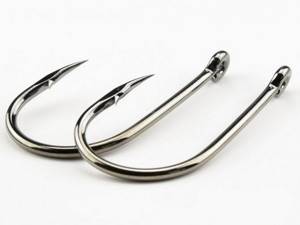
Models with nickel plating have increased resistance to corrosion, so they can be used for fishing both in fresh water reservoirs and in salty sea bays.
Separately, it is worth noting the G-Method Feeder and Feeder Strong series, which were produced specifically for feeder fishing and can be successfully used both in various classic equipment and for the flat feeder that is popular today.
Saikyo Company
The Saikyo company appeared on the fishing market relatively recently, but quickly found its fans among feeder fishing lovers. Feeders give preference to several series from the Saikyo line:
- KM-013 Reliable Feeder BN is a powerful hook with a long shank, designed for catching trophy fish using animal bait. The long forend allows you to attach several worms or one large crawl.
- KHS-10085 - a special feature of this model is a spring spiral, which makes it possible to use delicate plant baits in feeder fishing. The spring reliably holds soft dough or bread during casting and immersion of the equipment. The hook tip is slightly curved inward and has a Niddle point sharpening, which is optimal for catching peaceful fish with soft oral tissues.
- KH-10120 BN is a carp series made of large diameter wire. It is black in color and comes in sizes 10–6. The classic shape and wide hook allow the use of boiled barley grains and corn as bait.

Hooks with a straight bend are best used in combination with maggots or bloodworms.
Saikyo products are made from high quality carbon steel. In production, a method of chemical sharpening of the tip is used, which provides the hook with excellent penetrating abilities and increased grip. All series have a durable anti-corrosion coating that prevents the formation of rust and preserves the performance of the hook for a long time.
Products from Owner
is perhaps the most famous manufacturer of fishing hooks. Ovner products have found application in all types of fishing. Feederists also use products from this company in their equipment. The most popular series are:
- 50001 - the series is made from thin wire, which suggests the use of bloodworms and maggots as attachments. This series can often be found in the equipment of sports anglers who fish exclusively with bait of animal origin.
- 50188 - this series is distinguished by a shortened fore-end and is made in the classic version with a round bend. The thick wire of the hook makes it possible to use plant baits and fight large trophies. The hook has a dark finish and is available in sizes from 12 to 1 number.
- 50344 - the model will be useful to fans of trophy fishing, as it is characterized by increased strength, which is due to the presence of a forged hook. There are no small numbers in this series. Hook sizes start with No. 7 and end with No. 0/3. This size range allows the model 50344 to be used not only for fishing for white fish, but also for feeder fishing for catfish and other predators.
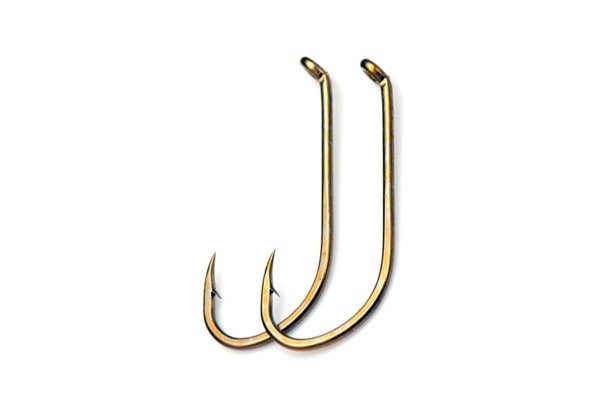
Yellow models work better when corn is used as bait.
Owner provides a large selection of color variations and different hook shapes, so the angler can always choose the product that best suits the type of bait used and his personal preferences.
Choosing the shape of the hook for the feeder
You can find hooks of various shapes on sale.
- Classic - the fore-end and hook run parallel. These hooks are quite popular among novice fishermen. Unfortunately, practice shows that they are less effective in feeder fishing and become dull faster. If you fish with these hooks in the current, then it is better to use a pair of pliers to bend the tip a little to the side. In this case, you will improve the implementation of bites, but the hook will become dull faster. This type of hook is more effective in float fishing.
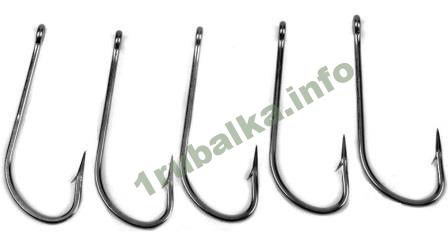
- Circle hooks - their tip is bent inward. These hooks are better suited than others for the feeder, because thanks to the sting hidden inside, they dull much less and hold the pecked trophy well. Particularly effective for catching bream on a feeder, and other fish are detected well by them. The only thing is that they are not recommended for catching roach, due to the structural features of its mouth.
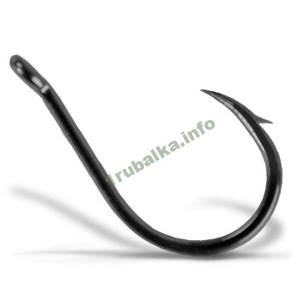
- Hooks of irregular shape (steeply curved inward, triangular, angular). These hooks dull little, since their tip is bent inward even more than that of circle hooks. And if you hook a fish with them, it will be very difficult for it to break free. Only, these hooks must be selected according to the size and weight of the fish.
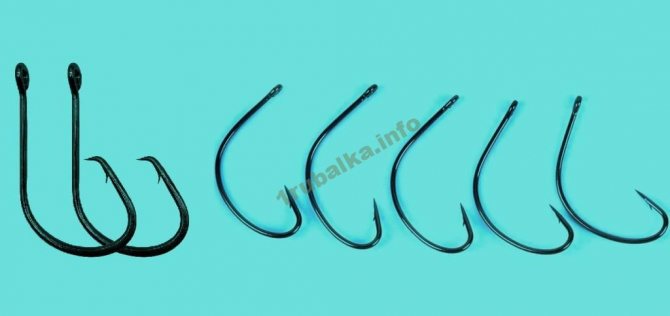
Most popular manufacturers
In first place is Gamakatsu, a popular manufacturer of fishing gear and accessories. The highest quality hooks in all respects are produced by this company. The price and quality of the products are in an ideal ratio. It is durable, has a high degree of grip, and is sharp.
The most used Gamakatsu models are LS-1010B and LS1040R. The first of them has optimal thickness and is suitable for any bait. The second has an elongated fore-end and fits perfectly under the worm.
Second place rightfully belongs to Owner. An equally well-known manufacturer of fishing paraphernalia. Hooks from this company are very popular. Well sharpened and reliable. A characteristic difference is the high financial cost, but it is justified. The most popular model is 50152. It is of high quality and can be used for any animal or plant bait.
The Kamasan company closes the top three. The quality of the products is not inferior to previous manufacturers.
The most popular models are: B 532 and B 525. The first sample is made from a material that is durable and has a thin shape.
Basically, it is installed on a feeder fishing rod under baits such as a worm and maggot. The second option is more applicable for fishing with a float rod.
Can be used with any bait.
Fourth in the ranking is Katana. An excellent budget option. The hooks are characterized by sharpness and high reliability.
At the end of the top five we can safely put the Japanese company Cobra. Wide selection of sizes and shapes in almost all fishing tackle outlets. The hooks are of high quality and reliability.
Kamasan is a well-known manufacturer and today is a sales leader. They offer universal and very reliable hooks, mainly specializing in very light and stainless wire.
Source: sezonribalki.ru
